Abstract
In an effort to develop a method for the rapid field identification of plague-infected fleas, the authors have studied the feasibility of direct fluorescent antibody staining of the midgut contents of fleas fed on mice infected with Pasteurella pestis. Fluorescent antibodies prepared from antisera derived from rabbits inoculated with the water-soluble P. pestis fraction 1b antigen, the somatic antigen of heat-killed P. pestis (Bryans strain), and live avirulent (strain A1122) or virulent (Yreka strain) plague vaccines were used used in this study.
This direct staining method proved to be impracticable, but encouraging results were obtained by fluorescent antibody staining of broth cultures of macerates of infected fleas after 24-48 hours' incubation.
The broth enrichment technique has not yet been evaluated in the field, but it is expected to be of value since it is relatively simple to perform and requires only material that can easily be transported to remote areas.
Full text
PDF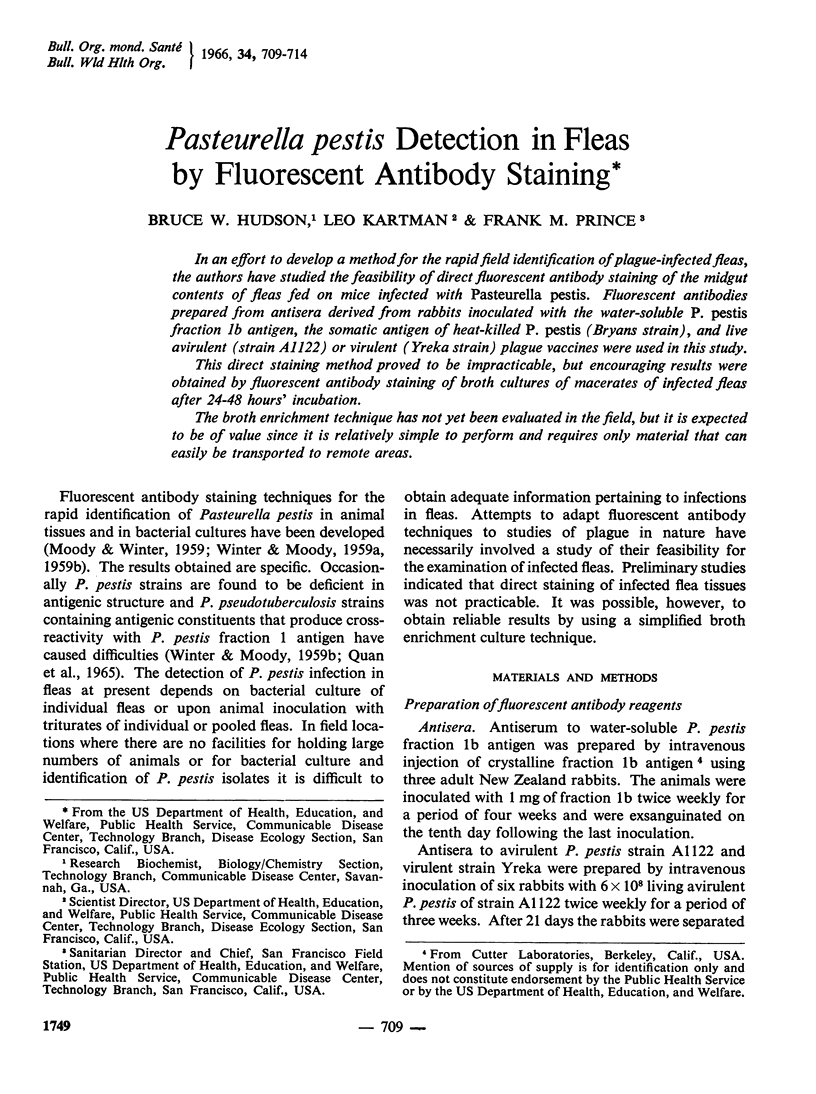
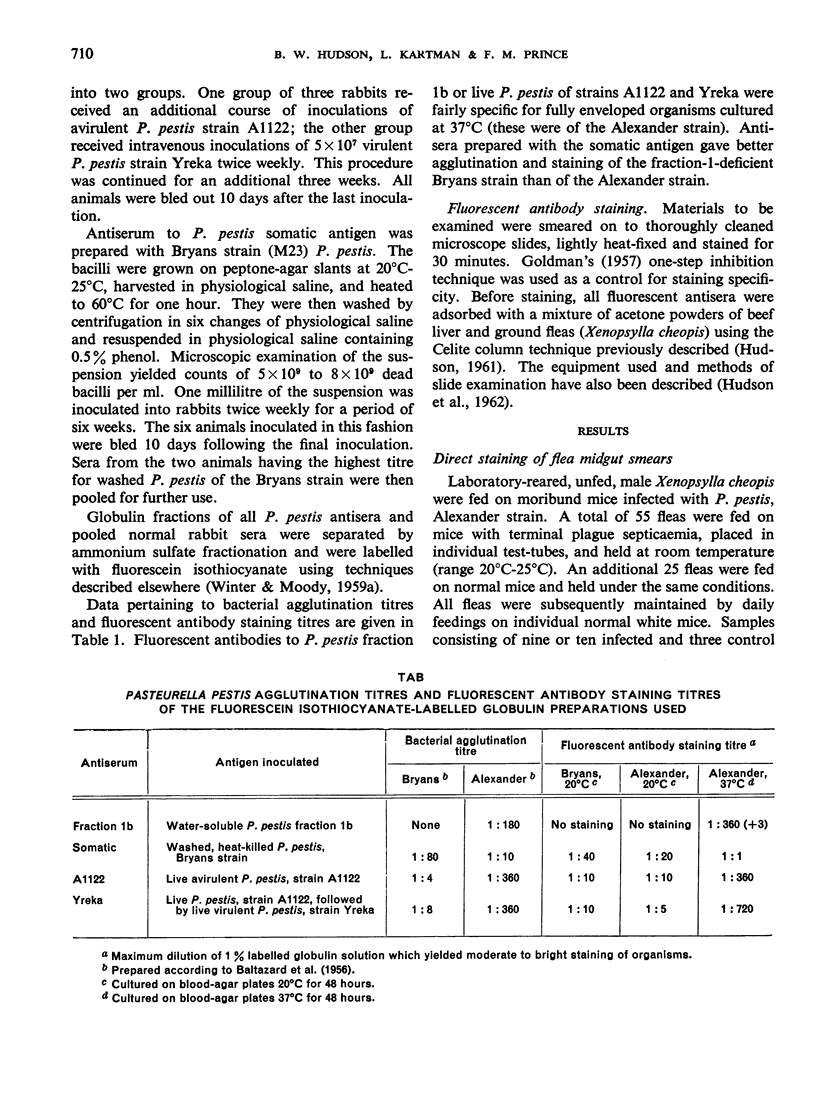
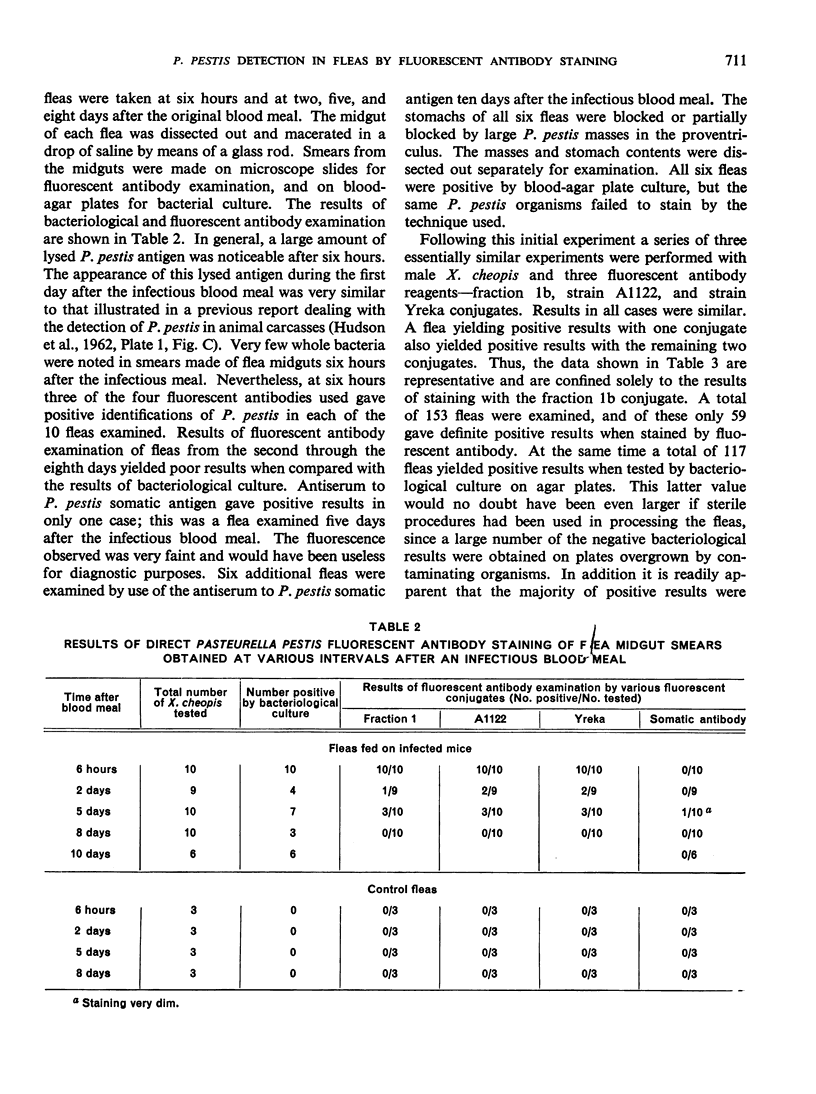
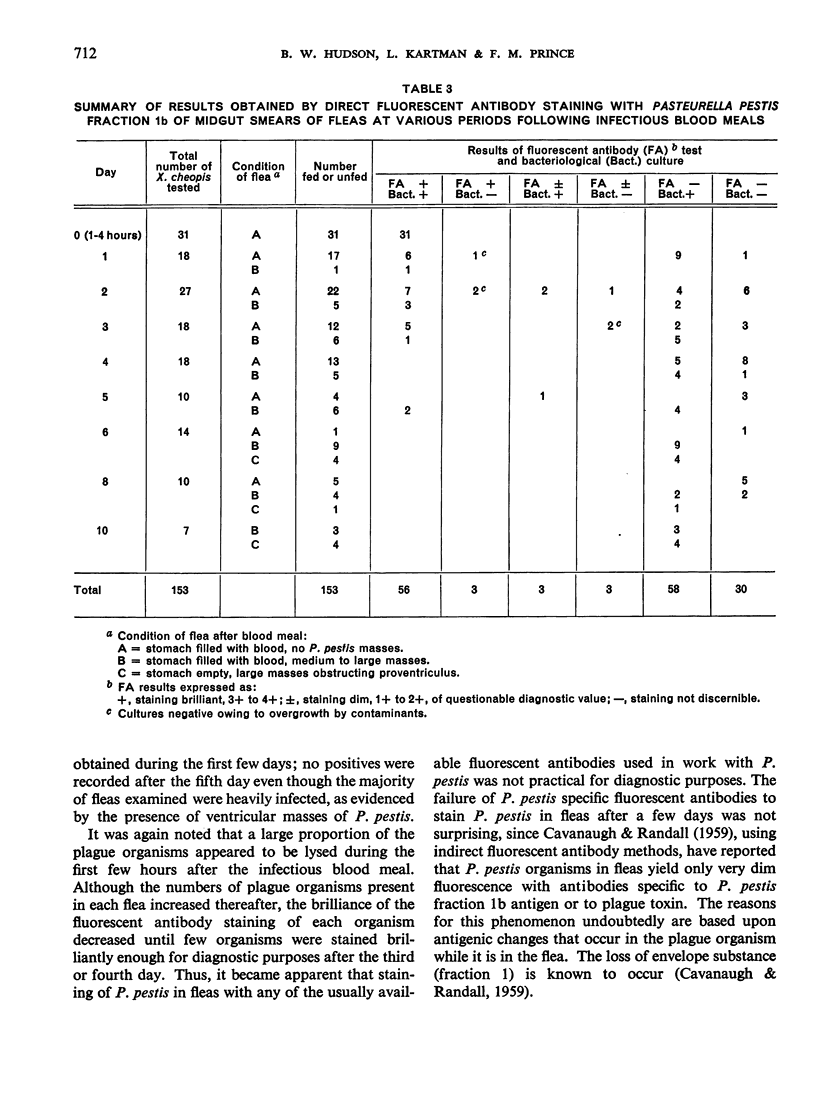
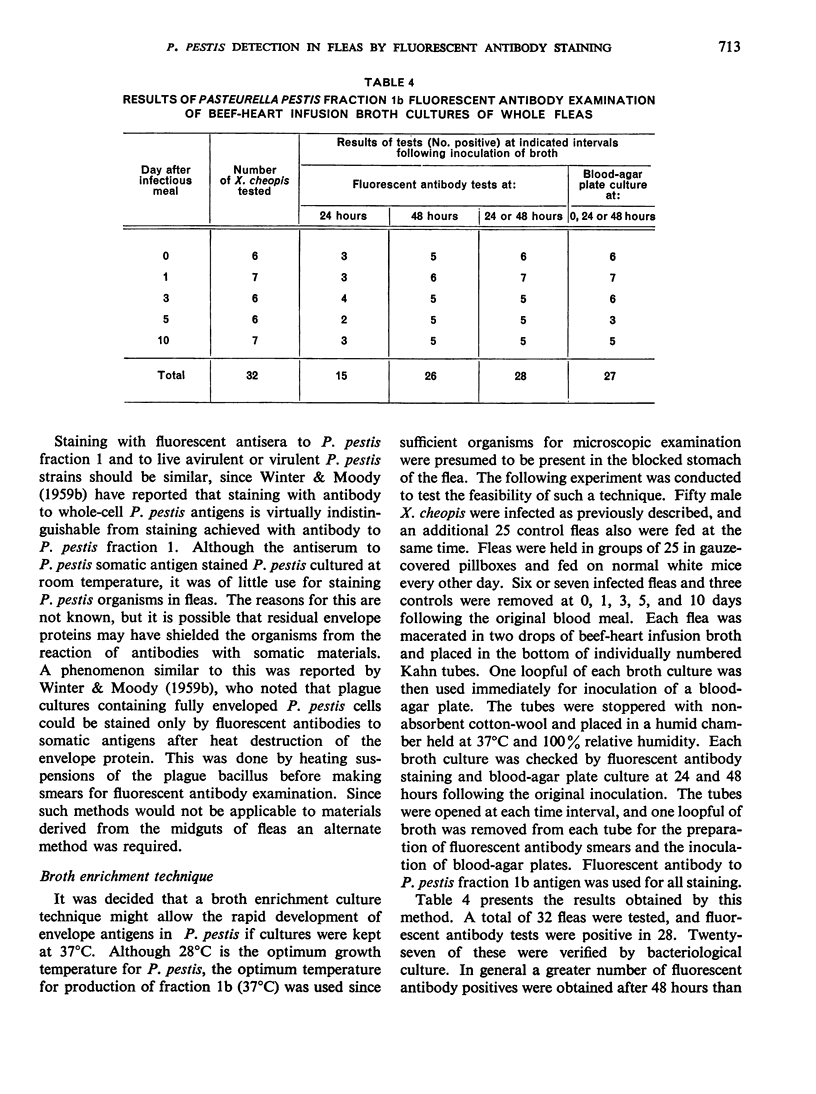
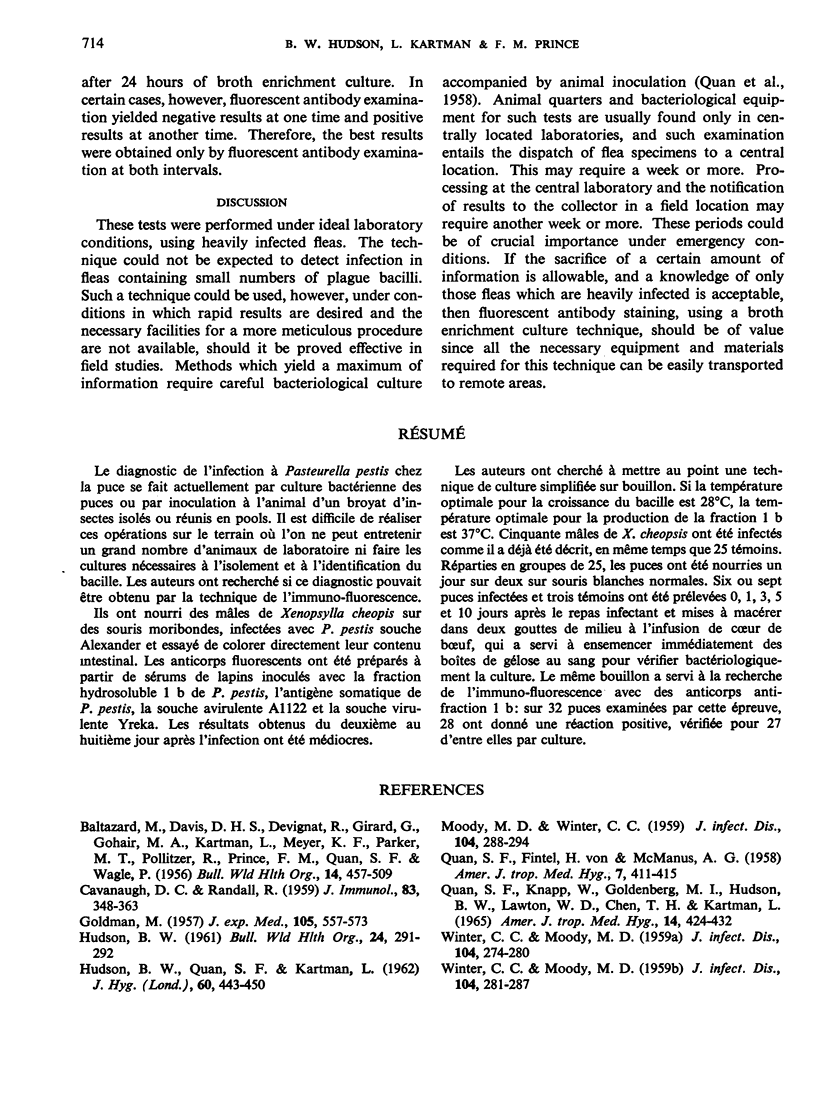
Selected References
These references are in PubMed. This may not be the complete list of references from this article.
- BALTAZARD M., DAVIS D. H., DEVIGNAT R., GIRARD G., GOHAR M. A., KARTMAN L., MEYER K. F., PARKER M. T., POLLITZER R., PRINCE F. M. Recommended laboratory methods for the diagnosis of plague. Bull World Health Organ. 1956;14(3):457–509. [PMC free article] [PubMed] [Google Scholar]
- CAVANAUGH D. C., RANDALL R. The role of multiplication of Pasteurella pestis in mononuclear phagocytes in the pathogenesis of flea-borne plague. J Immunol. 1959 Oct;83:348–363. [PubMed] [Google Scholar]
- GOLDMAN M. Staining toxoplasma gondii with fluorescein-labelled antibody. II. A new serologic test for antibodies to Toxoplasma based upon inhibition of specific staining. J Exp Med. 1957 Jun 1;105(6):557–573. doi: 10.1084/jem.105.6.557. [DOI] [PMC free article] [PubMed] [Google Scholar]
- HUDSON B. W. Column adsorption of fluorescein-isothiocya-nate-labelled antibodies. Bull World Health Organ. 1961;24:291–292. [PMC free article] [PubMed] [Google Scholar]
- HUDSON B. W., QUAN S. F., KARTMAN L. Efficacy of fluorescent antibody methods for detection of Pasteurella pestis in carcasses of albino laboratory mice stored for various periods. J Hyg (Lond) 1962 Dec;60:443–450. doi: 10.1017/s002217240002057x. [DOI] [PMC free article] [PubMed] [Google Scholar]
- MOODY M. D., WINTER C. C. Rapid identification of Pasteurella pestis with fluorescent antibody. III. Staining Pasteurella pestis in tissue impression smears. J Infect Dis. 1959 May-Jun;104(3):288–294. doi: 10.1093/infdis/104.3.288. [DOI] [PubMed] [Google Scholar]
- QUAN S. F., KNAPP W., GOLDENBERG M. I., HUDSON B. W., LAWTON W. D., CHEN T. H., KARTMAN L. ISOLATION OF A STRAIN OF PASTEURELLA PSEUDOTUBERCULOSIS FROM ALASKA IDENTIFIED AS PASTEURELLA PESTIS: AN IMMUNOFLUORESCENT FALSE POSITIVE. Am J Trop Med Hyg. 1965 May;14:424–432. doi: 10.4269/ajtmh.1965.14.424. [DOI] [PubMed] [Google Scholar]
- QUAN S. F., VON FINTEL H., McMANUS A. G. Ecological studies of wild rodent plague in the San Francisco Bay area of California. II. Efficiency of bacterial culture compared to animal inoculation as methods for detecting Pasteurella pestis in wild rodent fleas. Am J Trop Med Hyg. 1958 Jul;7(4):411–415. doi: 10.4269/ajtmh.1958.7.411. [DOI] [PubMed] [Google Scholar]
- WINTER C. C., MOODY M. D. Rapid identification of Pasteurella pestis with fluorescent antibody. I. Production of specific antiserum with whole cell Pasteurella pestis antigen. J Infect Dis. 1959 May-Jun;104(3):274–280. doi: 10.1093/infdis/104.3.274. [DOI] [PubMed] [Google Scholar]
- WINTER C. C., MOODY M. D. Rapid identification of Pasteurella pestis with fluorescent antibody. II. Specific identification of Pasteurella pestis in dried smears. J Infect Dis. 1959 May-Jun;104(3):281–287. doi: 10.1093/infdis/104.3.281. [DOI] [PubMed] [Google Scholar]


